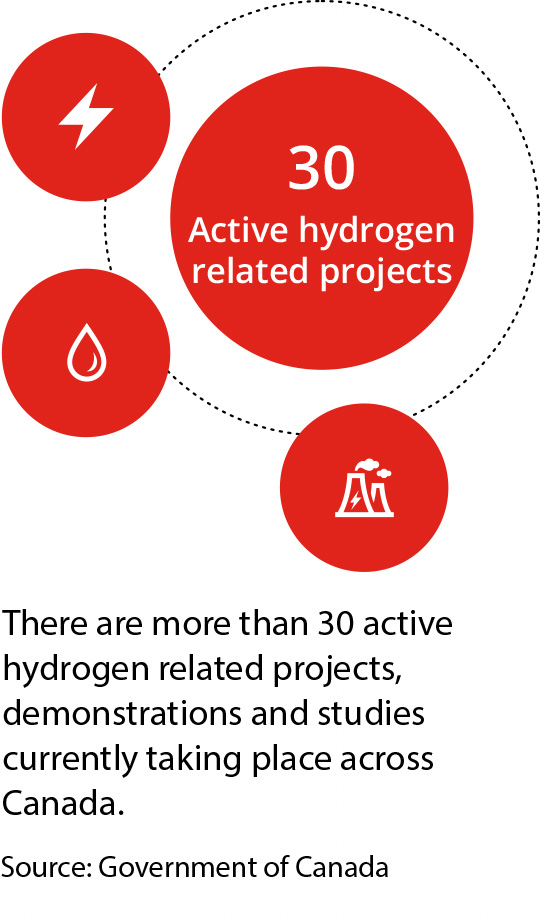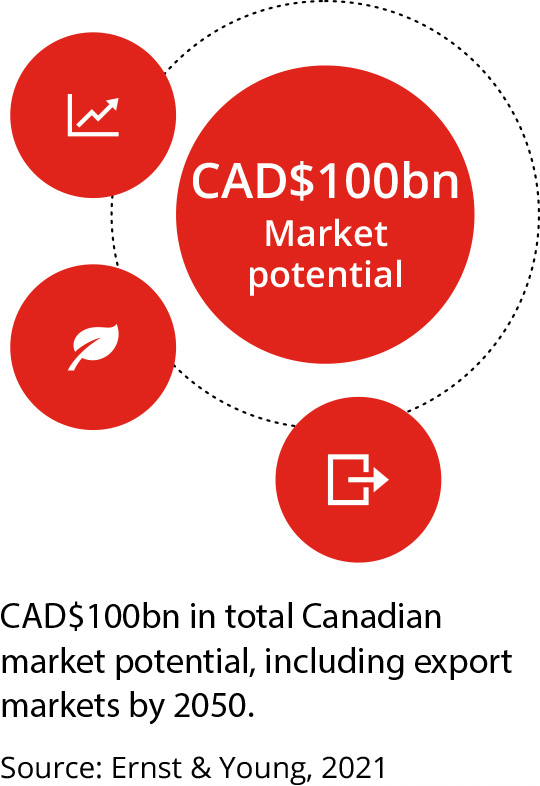Canada’s commitment to developing a low-carbon hydrogen economy is being backed by federal and provincial governments and a host of innovative, cross-sector partnerships
Canada is one of the world’s top 10 hydrogen producers in a global market whose value is set to rocket to an estimated €10tn by 2050, driven by increasing demand. The Government of Canada released its Hydrogen Strategy for Canada in 2020, which seeks to build on the country’s existing expertise in energy, clean tech and innovation, especially in the fields of hydrogen and fuel cell technologies.
As part of its overall action plan to achieve net zero carbon emissions by 2050, the Canadian government is spearheading its support for the production and use of low-carbon fuels with a range of initiatives. These include the Strategic Innovation Initiative Fund (SIF), which is aimed at the country’s industrial and technology sectors and provides an investment worth CAD$3bn to help reduce greenhouse gas emissions through the Net Zero Accelerator initiative.
Source: Statista
Production (million metric tons) of hydrogen worldwide between 2015 and 2018, with a forecast until 2050, by type
* PE scenario refers to the “Planned Energy Scenario”, which takes into account current governmental policies and targets as of 2019.
** TE scenario refers to “Transforming Energy Scenario”, assuming governments will be adopting more ambitious policies in order to reach the Paris Agreement of minimizing carbon emissions and staying below a 2 degree Celsius global temperature rise.
Source: Government of Canada
Canada maintains a leading position in hydrogen and fuel cell technologies innovation
Research, innovation and entrepreneurship in Canada benefits from significant tax breaks through the Scientific Research and Experimental Development (SR&ED) tax incentive scheme. At the federal level, these take the form of a 15 per cent non-refundable tax credit on qualified expenditures, while certain Canadian-controlled private corporations are also eligible for a 35 per cent refundable credit on the first CAD$3mn of qualified expenditures. Generous tax credits of between 4.5 and 30 per cent are also available from the country’s provincial governments.
Source: Government of Canada
The Scientific Research and Experimental Development (SR&ED) tax incentive is Canada’s largest R&D program
Back to top









